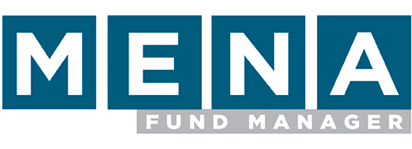Mena fixed income funds enjoyed strong returns last year, but can this continue in 2013? Usman Ahmed of Emirates NBD Asset Management – winner of Fixed Income Fund of the Year at Mena FM’s recent Performance Awards – outlines the investment case.
Despite the strong run up in bond prices in 2012, fixed income continues to be an asset class favoured by investors in the Mena region, although perhaps viewed with slightly more caution than last year.
There are a number of factors that are present in the market that support the continued growth of this asset class, helping to underscore the rationale for maintaining an allocation to Mena fixed income as part of a global portfolio.
Compelling relative value proposition
First and foremost, the Mena credit proposition still offers value, especially when compared with other emerging market debt issues. Despite the narrowing of spreads, regional sovereigns still trade at a discount to other emerging market credits, even though they exhibit higher credit ratings and stronger balance sheets. As an example, sovereign paper issued by Qatar and the Philippines both offer similar yields, even though Qatar is rated AA while the Philippines is BB+ (a difference of eight notches).
Additionally, when the Mena region is compared to the developed world, yields look attractive: Qatar returns almost 1% more when compared to similarly rated developed market bonds.
Attractive yields
Investors are continuing to search for yield, with that search becoming ever more challenging. Credits in the Mena region still have attractive carry, as evidenced by the funds managed by Emirates NBD Asset Management. A full year dividend payment of 5% was announced in December 2012 for the Emirates MENA Fixed Income Fund and 4% for the Emirates Global Sukuk Fund. Mena issuers are sound from a credit standpoint as a whole, yet are somewhat penalised in terms of the spreads they have to pay in the new issue market, which works to an investor’s benefit.
Strong liquidity and technical factors in the market
The market is still nascent. However, the region has seen a strong pipeline of new issuance in the last few years, with most issues well oversubscribed.There have also been a number of groundbreaking transactions, which highlight the further development of the fixed income market in the region. Issuers are now tapping the debt capital markets regularly as an additional source of funding, creating yield curves across the credit rating spectrum.
Among the recent landmark transactions was the first Tier 1 perpetual issue in the region from ADIB, which was 15 times oversubscribed, with the issue trading very strongly in the secondary market. More recently, the Government of Dubai issued a 10-year Sukuk and its first ever 30-year public benchmark on the same day. The new 10-year issue re-priced the yield curve, and reverse enquiry led to the 30-year issue, which is the first ever “unrated” 30-year public USD benchmark.
The 10-year attracted a record order book of $11bn and the 30-year $4bn, from a high quality and diversified investor base, allowing both issues to price at tight levels. In the current environment of declining deposit rates and relatively cautious investor appetite for equities, we expect to see continued strong appetite for attractively priced issues.
Strong institutional relationships allow the best access to the new issue market. Against the backdrop of this buoyant new issue market, it has been difficult to participate in these issues as a smaller investor. Issues are many times oversubscribed and the smaller investors struggle to obtain adequate allocations. In this climate, institutional investors fare better – the Emirates MENA Fixed Income Fund subscribes to attractive new issues that are selected by the investment team and, due to Emirates NBD Asset Management’s strong institutional relationships, developed over the years, the fund has received favourable allocations. Demand will continue to remain strong, in the Sukuk space in particular, due to a growing Islamic investor base having a somewhat limited universe from which to choose.
Diversifying opportunity set
Ultimately, the regional credit market is still maturing and we expect to see a strong pipeline of issuance from non-financial and non-sovereign issuers over the next few months. This will further broaden the opportunity set for investors across the maturity and credit quality spectrum. While many individual investors find it difficult to analyse the risks and opportunities in the market successfully, a professional fund manager with his experience and team of analysts, is able to do this in a proper and disciplined manner, and invest accordingly.
Conclusion
The Mena fixed income market should continue to offer strong value coupled with low volatility. The Mena fixed income funds managed by Emirates NBD Asset Management have consistently outperformed their benchmarks, with strong absolute returns for the funds over a 12-month period. Although market performanceduring 2012 was impressive, there remain compelling arguments as to why Mena fixed income should still be part of an investor portfolio and why we haven’t seen the last of this growing asset class.



